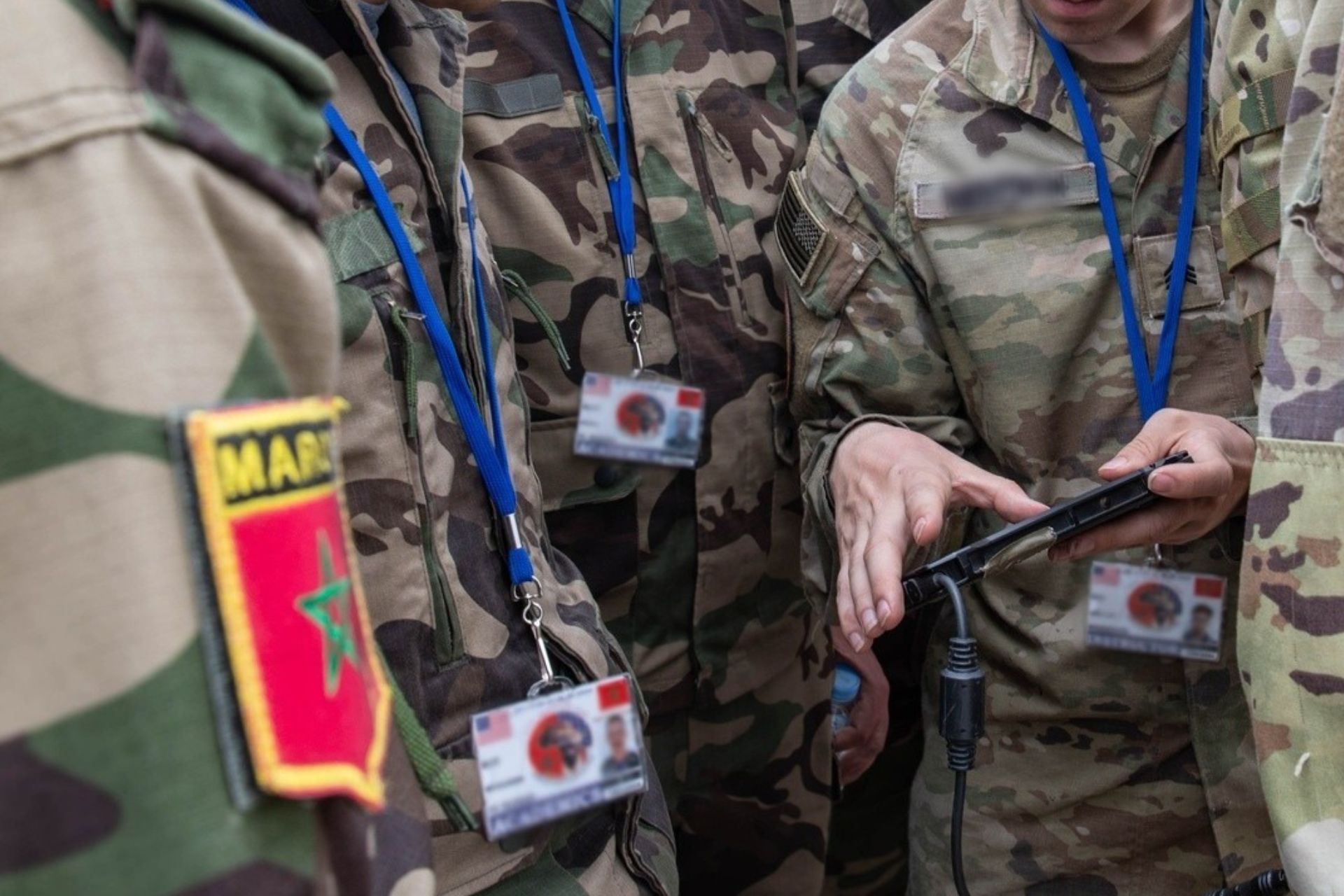Breaking News
US and Moroccan Forces Test Advanced Electronic Warfare in Joint Exercise.
From August 5 to August 16, 2024, American and Moroccan troops are participating in a crucial exercise near Agadir, Morocco, testing new electronic warfare technologies and tactics. This joint effort, part of the "Arcane Thunder 24" maneuvers, is part of a broader initiative to restore and enhance military capabilities that were largely dismantled after the Cold War. The exercise involves high-tech tools, including high-altitude balloons and various types of drones, used to locate and neutralize enemy radars and radio transmitters.
Follow Army Recognition on Google News at this link

US Army cyber operations specialist discusses device utility to Moroccan warfighter in May 2024 (Picture source: US DoD)
The US Army’s 2nd Multi-Domain Task Force (MDTF), particularly its 2nd Multi-Domain Effects Battalion, is at the center of this exercise. The battalion practices detecting and fixing the positions of potential enemy targets, which can then be jammed or destroyed, either temporarily using drone-borne jammers or permanently with lethal drones. Alternatively, the coordinates can be relayed to the MDTF’s long-range missile launchers for targeted strikes. This capability is the primary function of the Multi-Domain Effects Battalion, which combines advanced aerial drones, cybersecurity software, and satellite feeds to conduct multi-domain reconnaissance missions.
This ongoing binational exercise marks the first time the "Arcane Thunder" maneuvers are being conducted in Africa, following a previous session in Romania last year. Approximately 300 soldiers from the military forces of the United Kingdom, Germany, Morocco, and the United States are participating in these exercises, along with military observers from Italy and the Czech Republic. The integration of Moroccan forces in this exercise underscores the growing military collaboration between Morocco and its allies.
The exercises involve the use of a mix of tethered aerostats, various drones, and even unmanned surface vessels from the Navy’s Task Force 66 to conduct wide-area scans and pinpoint enemy signals. These technologies allow the forces to practice detecting and neutralizing enemy radars and wireless transmitters, a critical skill in modern warfare. Military experts emphasize the importance of electronic warfare in gaining a strategic advantage, as it provides precise information on enemy positions and capabilities.
The drones deployed in the exercise include the Kraus Hamadi Aerospace K-1000, a solar-powered mini-plane capable of staying aloft for several days, and the Shield AI V-BAT, which can take off and land vertically, offering deployment flexibility. Additionally, the exercise implements products from the Army’s Launched Effects initiative, including the ALTIUS 700, a medium-range drone equipped with sensors, jammers, or an explosive warhead.
Despite these advancements, the Army is still awaiting the deployment of long-range, high-power jammers, expected to enter service in 2026. Much of the equipment used in the exercise comes from prototypes and experimental offerings from industry partners, rather than formal large-scale procurements. The exercise provides a crucial opportunity for the battalion to test this equipment, provide feedback, and influence future Army procurement and development programs.
This exercise is one of the most significant military activities organized by Morocco, alongside the annual African Lion exercises, which have been held in the Kingdom for two decades. The African Lion maneuvers are the largest military exercises conducted on the African continent, with participation from the armies of many countries. Observers note that Morocco has increasingly involved its forces in numerous military exercises abroad and continues to host significant international military maneuvers within its borders, aligning with a comprehensive strategy to modernize its military arsenal.


























